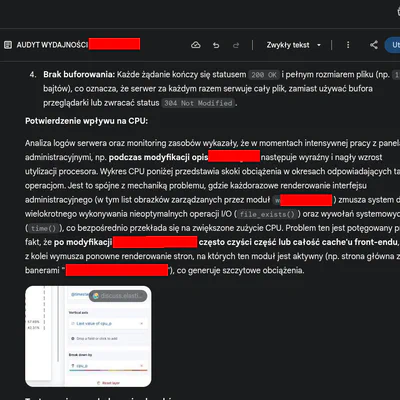This article discusses the application of Socrates' maieutic method in conversations with AI to obtain more valuable responses. It includes reflections on effective work with AI models and a critical analysis of common user mistakes, highlighting why doubt is a fundamental skill in working with Artificial Intelligence.
Table of Contents
The Fundamental Mistake of Delegating Competence
I have been using paid AI models daily for several years, and when reading derisive opinions on the Internet about how artificial intelligence produces nonsensical answers, I get the impression—putting aside the lack of information on the model used—that the authors of such opinions are making the mistake of fully delegating authority and competence to something that should serve as support and assistance, not a source of knowledge. Today, I will briefly present the method I use, along with some reflections.
Socrates vs. Sophists – Controlled Dialogue
During my philosophy studies, I recall Professor Gajda, who taught Greek philosophy at the University of Wrocław, describing the maieutic method attributed to Socrates in Plato’s works. This method is intriguing because it distinguished the conversations of sophists—who excelled in argumentation that led nowhere—from dialectical questioning aimed at uncovering what can be called sense or truth. Socrates used eristic and logical tricks, trying through a series of questions to force the interlocutor to reach the correct answer independently.
I apply this exact method in conversations with AI, and I believe that, much like in the philosophical tradition known from historical accounts, there is a distinction between a sophistic conversation and one that leads to the truth. Therefore, I am convinced that the fundamental issue with using and interpreting AI responses lies in conducting the conversation poorly and excessively delegating authority and competence to an interlocutor who does not yet know. The Socratic interlocutor does not know the truth. Only a series of questions can guide them to discover their potential and the ideas they are unaware of but have the capacity to connect through their experiences and knowledge. That is the purpose of dialogue.
The same applies to conversations with AI.
Is It Rambling, or Is It Thinking—and Better Than Ever?
However, if you read statements by various journalists, celebrities, scientists, and especially computer scientists, claiming that ChatGPT or AI models, in general, are rambling models that pose a danger only to users unable to distinguish nonsense from truth, let me quote a recent statement by Polish physicist Andrzej Dragan:
“Well, as I predicted a few months ago in a discussion with, among others, Aleksander Madry from OpenAI, it turned out to be true :) The latest GPT-o1 model has exactly what previous versions lacked—something resembling the first-ever artificial ‘System-2’ modeled on human reasoning processes (see Daniel Kahneman’s work). The result is that the algorithm solves more advanced theoretical physics problems than those we give students during exams and only fails on truly tricky and unorthodox problems… If anyone wants to test themselves (googling won’t help much): provide the first non-vanishing term in the series expansion for the total rotation angle in Thomas precession of an electron in a classical orbital motion in a hydrogen atom, assuming constant velocity and a single complete orbital cycle. GPT-o1 produced the correct answer in 13 seconds, despite the problem being formulated maliciously to lead one astray. So, yes…” Andrzej Dragan on X
When Dragan wrote this, the GPT4-o1 model had just been released. At the time of my writing, an even better model, GPT-5, is planned for release.
Wrapping the Model in Instructions
The model number doesn’t matter, as they are always part of a dialogue, meaning that the entire conversation (chat) consists of an input (INPUT) and an output (OUTPUT). Only the conversation operator—the maieutic midwife who extracts the essence of the conversation—determines the meaning of the dialogue and whether it will be useful and how useful it will be. I call this “semantic sculpting of the model,” where we gradually establish the meaning of concepts and probe their definitions. The amount of meaning we input into the model significantly affects the value of the OUTPUT we receive, and we can also modify it.
A key aspect of effective model use is wrapping it in instructions, as the model itself is merely a potential for generating responses according to its capabilities and algorithms. Thus, the more we prepare our workspace by defining the response’s boundaries, form, and our characteristics as the interlocutor, the better responses we obtain.
The same applies to Socrates’ dialogues with his students. It is worth mentioning that dialogue, or conversation, was fundamental to Greek philosophy. Contrary to appearances, dialogue did not end with Plato’s era (dialectics) and his followers or commentators, as every subsequent philosopher or thinker referenced their predecessors. Thus, there is an ongoing dialogue with tradition. The body of centuries-old conversations preserved in books, texts, and dissertations forms our cultural memory (tradition). Today, this memory, as I described in the digital palimpsest, is embodied by the Internet, which is highly susceptible to manipulation and fading. AI is developing exponentially, and now not even its creators can fully explain its mechanisms or predict its developmental limits. Will AI start deceiving us at some point?
Confronting Responses – Doubt
The most crucial element of the conversation is something very fundamental: doubt. This seemingly basic skill is what distinguishes a sophistic conversation from a Socratic one. A sophist will overwhelm us with words, but it will be useless knowledge. If we let AI “speak” without intervention, it will similarly overwhelm us with nonsense. By confronting prompts and critically shaping the entire conversation, I believe we achieve excellent results. I often use prompt generation for prompts—a cascading technique where I use models alternately against each other to generate critiques of their responses. However, this is an advanced and time-consuming method that falls beyond the scope of this article.
Preview of the Conversation: An Experiment with the Maieutic Method
In the next article, I will publish a detailed transcript of my conversation with AI, where I applied the maieutic method. It will be a practical example of how this technique works in reality and the results it can achieve. The experiment, whose effects I will present in the following entry, was inspired by the BBC’s The Coming Storm by Gabriel Gatehouse, which analyzes the mechanisms behind conspiracy theories. The authors vividly showcase the mind’s pitfalls. However, the second season featured a strong emphasis on AI, and what specifically inspired me was the finale and information about behind-the-scenes discussions with those responsible for the security and training of the largest AI models.
This conversation will be our starting point for discussing issues that deeply concern me, such as the state of SERP (Google search results), the direction of SERP changes, whether it will be replaced by AI interactions (concealment of sources and disappearance), and other spam-related issues, which I will cover in future articles explaining how spam can be mass-generated and how it has been done for years—only now accelerated by AI.
I encourage everyone skeptical about AI technology to apply the maieutic method. In my view, it serves not only cognitive functions but also therapeutic ones. For me, the advent of AI and conversations with AI have rekindled my interest in philosophy and its origins. I am once again enjoying reading Greek philosophical texts. Has AI inspired you to do something positive and creative as well?





